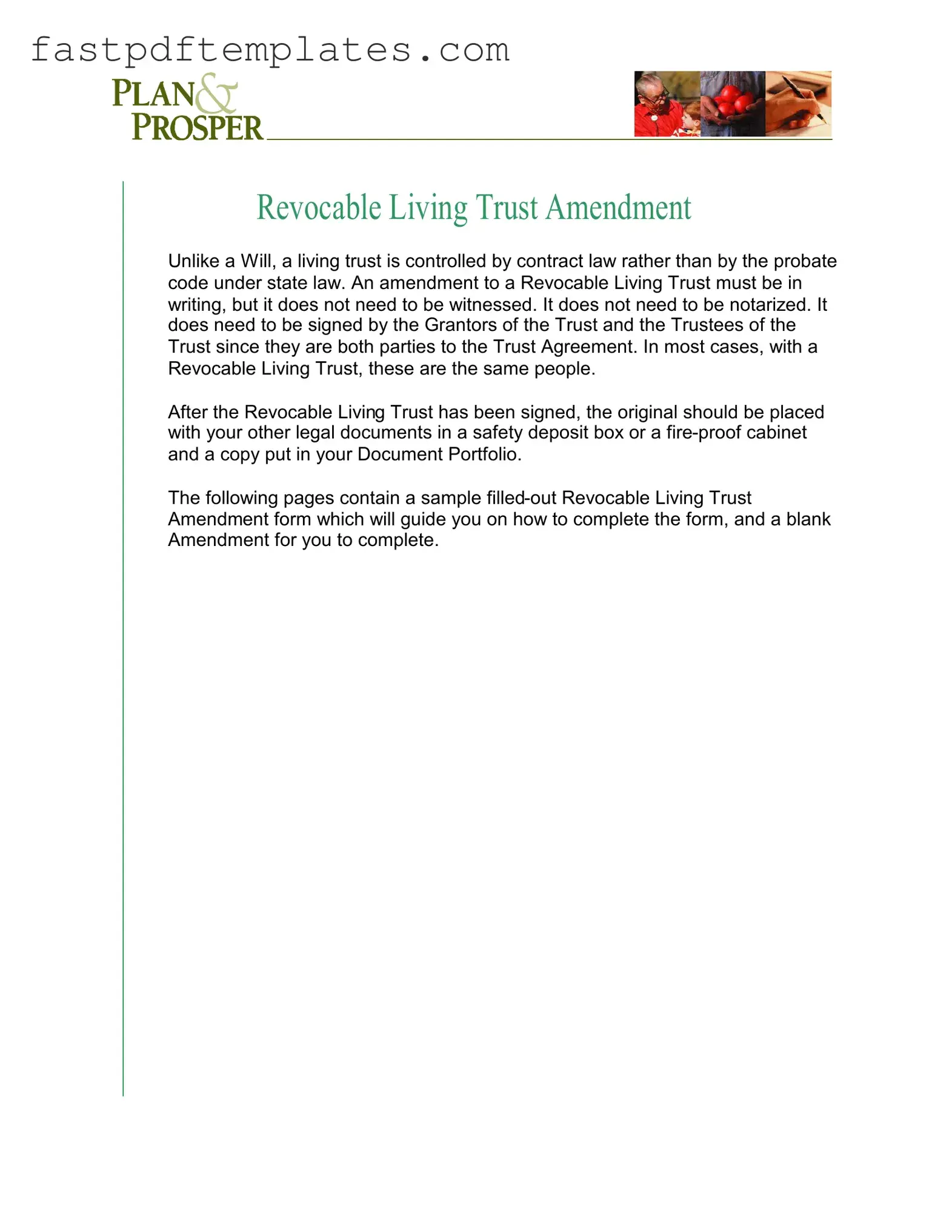The Revocable Living Trust Amendment shares similarities with a Will, as both documents serve to outline the distribution of assets upon an individual's death. However, while a Will goes through probate and is subject to state laws, a Revocable Living Trust allows for the direct transfer of assets without the need for court intervention. Both documents can be amended, but the process for amending a Will often requires more formalities, such as witnessing and notarization, whereas the Trust Amendment does not.
A Power of Attorney (POA) is another document that parallels the Trust Amendment. Both documents allow individuals to designate authority to another party. A POA grants someone the power to make decisions on behalf of another, often in financial or health-related matters. Like a Trust Amendment, a POA must be signed by the principal but does not typically require witnesses or notarization, making it a straightforward way to manage one's affairs.
A Living Will is similar in that it addresses an individual's wishes regarding medical treatment and end-of-life decisions. While a Trust Amendment modifies the terms of a trust, a Living Will specifies the type of medical care one wishes to receive if they become incapacitated. Both documents reflect personal choices and can be updated as circumstances change, emphasizing the individual's autonomy over their own affairs.
The Durable Power of Attorney for Health Care is akin to a Trust Amendment in that it allows for modifications regarding healthcare decisions. This document appoints someone to make medical decisions on behalf of an individual if they are unable to do so. Like the Trust Amendment, it must be signed by the principal but does not require witnesses or notarization, streamlining the process of ensuring one's healthcare preferences are honored.
A Buy-Sell Agreement is another document that functions similarly to a Trust Amendment, particularly in business contexts. It outlines the terms under which business interests can be transferred among partners or shareholders. Just as a Trust Amendment modifies the terms of a trust, a Buy-Sell Agreement can be amended to reflect changing business circumstances or ownership structures, ensuring that all parties remain aligned with their goals.
A Deed of Trust can also be compared to a Trust Amendment, as both documents deal with the management and transfer of property. A Deed of Trust secures a loan with real estate, while a Trust Amendment can alter the terms under which property held in trust is managed or distributed. Both documents require the signature of the involved parties but do not necessarily need witnesses or notarization, allowing for flexibility in managing property interests.
A Revocation of Trust is another document that shares a connection with the Trust Amendment. While an amendment modifies the existing terms of a trust, a revocation completely dissolves it. Both documents must be executed by the Grantor and can be done without witnesses or notarization, simplifying the process of changing one's estate planning strategy.
A Quitclaim Deed bears similarities to a Trust Amendment in terms of property transfer. This document allows an individual to transfer their interest in real estate to another party without any warranties. Like a Trust Amendment, it requires the signature of the grantor but does not need to be notarized or witnessed, making it a quick way to change ownership of property.
A Letter of Instruction can also be seen as akin to a Trust Amendment, as it provides guidance on how to handle specific assets or wishes after an individual's passing. While it does not hold the same legal weight as a trust amendment, it serves to clarify the individual's intentions, much like how an amendment clarifies or changes the terms of a trust. Both documents can be easily updated and do not require formal witnessing or notarization.
Lastly, a Healthcare Proxy is similar to a Trust Amendment in that it designates someone to make healthcare decisions on behalf of another person. This document, like a Trust Amendment, emphasizes the importance of personal choice and can be updated as needed. Both require the signature of the individual granting authority, offering a straightforward approach to managing health-related decisions.





